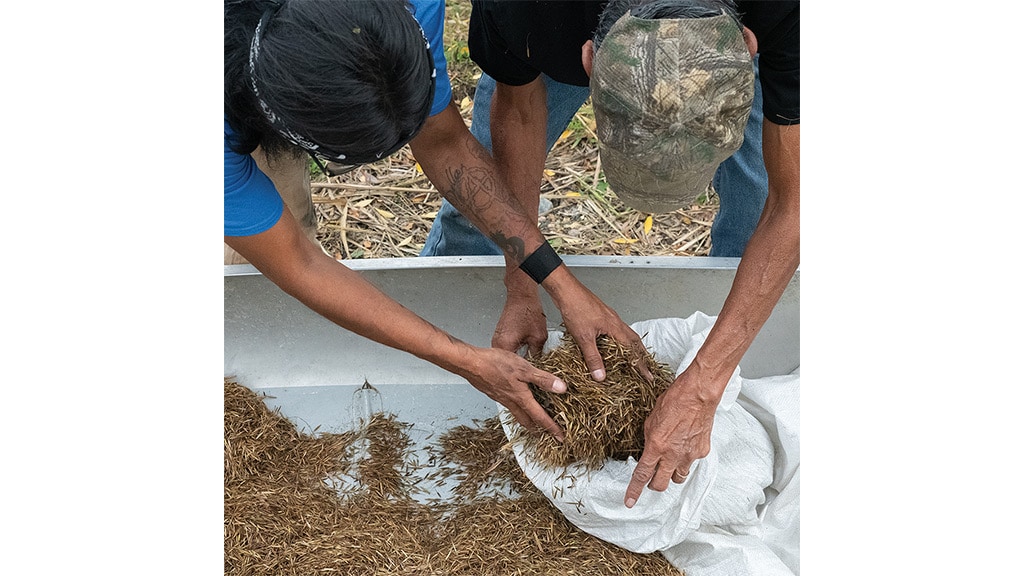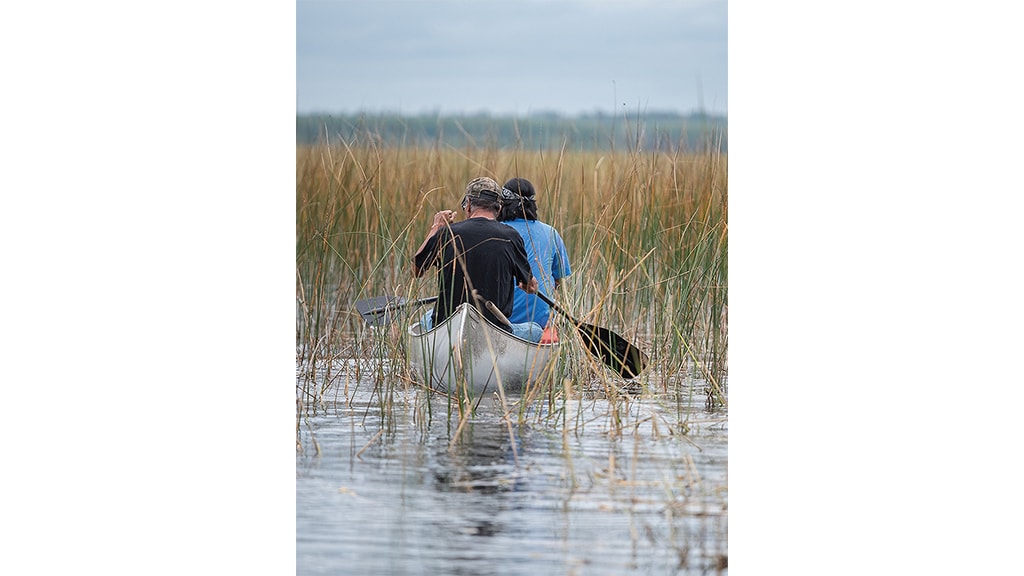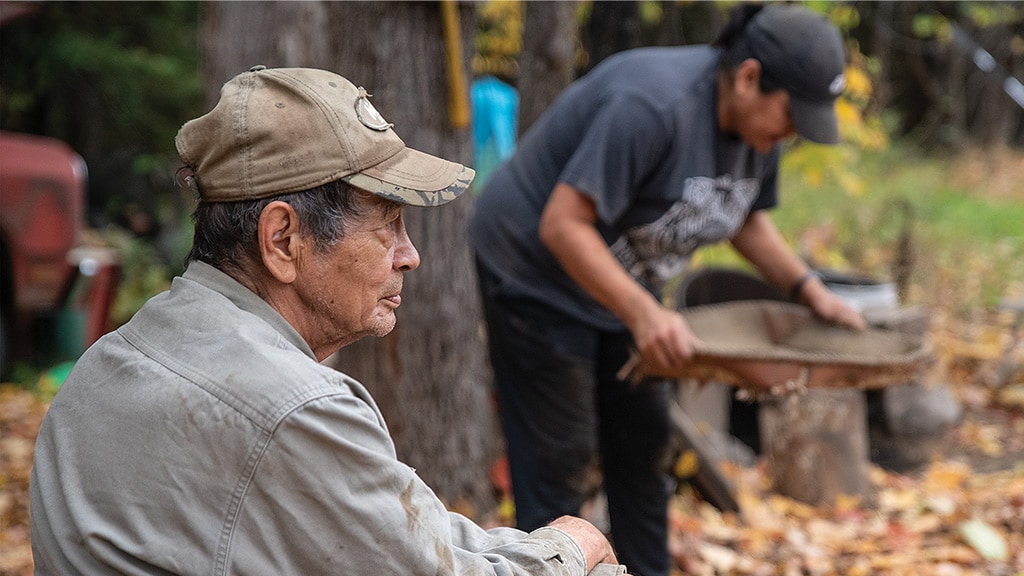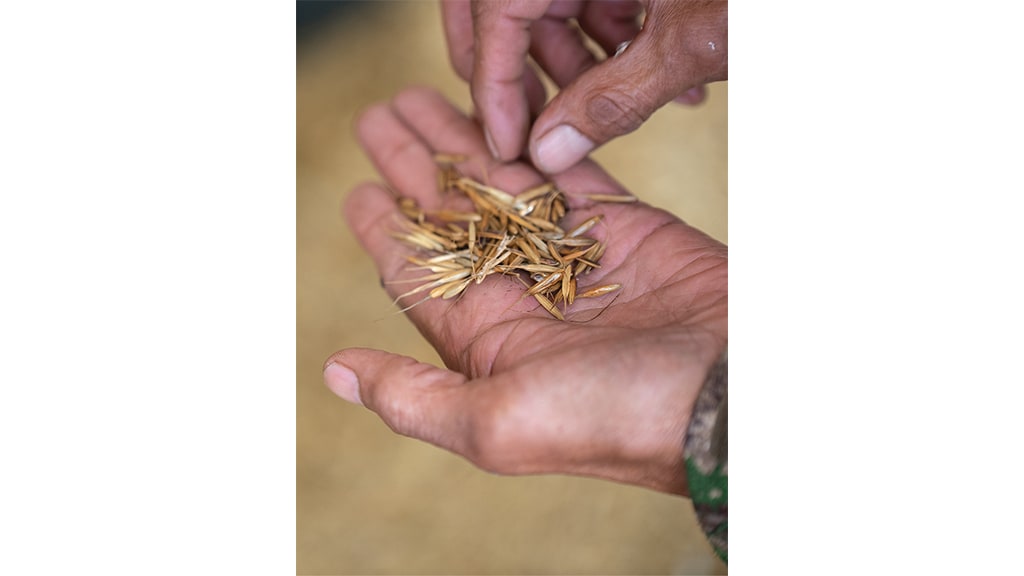
Nett Lake is a 7,400-acre lake in Minnesota’s north woods. In a good year, wild rice covers more than half of its surface.
Agriculture, Specialty/Niche June 01, 2024
Floating Harvest
Following the call to wild rice.
by Katie Knapp
With the gentle glide of the paddle, Gordy Adams Jr. and Gordy Adams III disappear into the tall grasses above Nett Lake's shallow water. They guide their canoe towards Spirit Island in search of wild rice, just as their Anishinaabe ancestors first did hundreds of years ago.
The father and son are members of the Bois Forte Band of Chippewa, a French name meaning "strong wood" given to the Native Americans living in Minnesota's north woods. The tribe is part of a wandering group of indigenous people who followed the call of spirits along the St. Lawrence River through the Great Lakes. Elders were told of large lakes ahead with food growing on them.
From the boat launch, Bois Forte DNR Conservation Officer Tony Mason retold the origin story adding that they knew Nett Lake was the place they were called to generations ago because "they could see little people on the island off in the distance as they started paddling across. When they got to the shore, no one was there. Instead, they found many drawings on the rocks. They named it Spirit Island."
The spirits guided the people to present-day northern Minnesota. The manoomin, the Anishinaabe word for wild rice, that fills the lake from shore to shore is why they stayed.
Northern wild rice (Zizania palustris) is an annual aquatic grass similar to but not directly related to traditional white rice (Oryza sativa). It naturally grows best in Upper Midwest lakes and streams. Tribal people rely on it for daily sustenance, cultural foundations, and as an economic driver.
Since the 1866 Treaty formalized the Bois Forte Band's reservation, Nett Lake has remained an important ricing lake because it is one of the largest. Its 7,400 acres just south of the Canadian border can yield up to 2 million pounds of rice per year.
"The rice from Nett Lake is so rich and can be stored for a very long time. This is one of the reasons it is so important; it has gotten the people through really tough times," explains Mason. "They are so grateful for whatever they get each year because without it, they would have to be somewhere else."
Today, the DNR and tribal members manage the water levels and monitor the water quality, and they restrict ricing to band members only.
"The hydrology, geology, and climate factors all have to come together to produce rice," explains Chris Holm, Ph. D., Bois Fort DNR ecological resources program director. "The water flow [through one dam] is the only thing we can control. It is not like any other cultivated agricultural crop."
Above. Gordy Adams III spends a cool September afternoon on Nett Lake harvesting wild rice. They are members of the Bois Fort Band of Chippewa. Adams III propels their canoe with a special pole that pushes against the mucky lake bottom, while Adams Jr. knocks the rice into the boat with two short rods. Once harvested, the rice is processed by hand—first cleaned of debris, then parched over an open fire and finally thrashed and winnowed to remove the chaff. Pete Isham and his daughter, Theresa Knife Chief, do much of the final step for their community.
The rhythm of rice. Once the rice is ripe and the elders have opened the lake for harvest, everyone starts to move with a particular cadence.
"There is an anxiousness and excitement leading up to harvest, but once it comes, it is very quiet as they disappear onto the lake," says Holm, whose office is across from the main boat launch.
Two by two, they go out in their canoes: one to push and pull the boat through the shallow, mucky water, and one to knock the grains into the boat.
"He is the poler so he sits in the front, and I am the knocker in the back," says Adams Jr. about ricing with his son. "It is more of a sweeping than knocking. You just sweep the head—you can hear the swishing as the rice rains down into the boat."
They try to get as much rice into the boat as possible; the grains that fall into the lake instead will seed future harvests.
"There is no limit to how much we harvest; it is more about how much we want and also about taking time to bond and talk to each other," Adams Jr. adds.
After the rice is harvested, it is laid out to dry, cleaned of debris, and then parched (roasted) over an open flame.
"It is actually miserable, hard work, but you get into a rhythm with your partner pushing it back and forth in the pan," says Francis Littlewolf Jr., a parching crew leader. "It is rewarding to finish with great quality rice that is respected as the best in the world."
The finishing step is to remove the chaff. Pete Isham thrashes and winnows most of the community's rice.
"I used to be out there in the lake, too, but it became difficult to find a partner after my wife could no longer do it. I can finish the rice [for everyone else] without worry about wind, rain, or partners. And now my daughter is taking it over," Isham says.
Most of what the band members harvest each year is for their own pantries, and some also sell it directly to the public. Ricers sell the remainder to the tribal council and DNR, who in turn hire band members to process it and then market it to consumers as well as high-end restaurant chefs.
"Native, hand-parched wild rice is much different than cultivated, paddy wild rice; it is a lighter color, has a richer flavor, and retains a higher moisture content. It cooks in just 15 to 30 minutes," says Holm. "Everyone should try it at least once in their life," he adds. ‡
Read More

AGRICULTURE, LIVESTOCK/POULTRY
More than Food
From farm to table, this ranch family is improving lives along the way.

EDUCATION
A World of Spice
Spices laid the foundations of global trade and they're still driving changes today.







